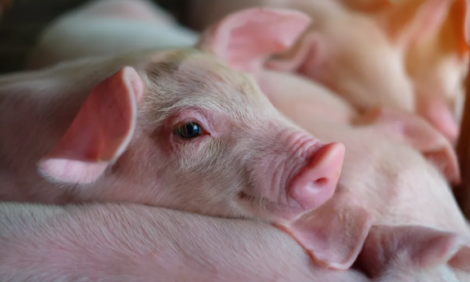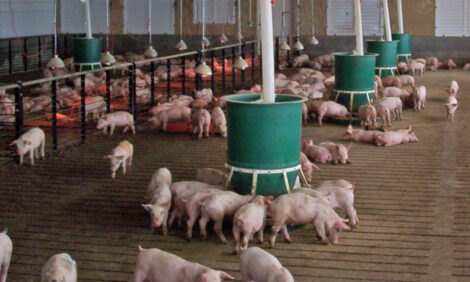



United Kingdom Pig Meat Market Update - April 2011
James Park, senior economic analyst with AHDB Meat Services Economic and Policy Analysis Group, explains the latest trends in the UK and EU.UK Prices
During the first two months of the year, the DAPP weakened whilst in a number of other EU markets prices were on an upward trend. However, since the beginning of March, the DAPP has shown small but steady increases week-on-week on the back of tightening supply rather than a significant increase in demand. In the week ended 19 March the DAPP rose for third consecutive week to average 135.6p per kg, up over half a penny compared with the previous week. Nevertheless, producer prices are around five per cent lower than what they were a year ago and are two per cent lower than the start of the year. Pig producers are currently losing an average of £22.00 (AHDB MI estimate) on every pig produced; with little sign of conditions improving as the volatility of feed prices likely to undermine any recovery in the DAPP.

Average carcass weights in the DAPP sample remained at around 80kg in the first three weeks of March, one kilo heavier than the year-earlier values. Probe measurements reduced to 11.1mm throughout March, indicating that heavier carcass weights are not having adverse affect on producing lean pigs.
The average weaner price has followed the movements in the finished pig market as the price has slowly crept up since the beginning of March. In week ended 26 March, the average price increased marginally on the previous week to £41 per head. There are reports of a tightening in the supply of weaners in the market place. However, prices continued to be significantly below year-earlier quotations. Similarly to pig market, the weaner trade continued to be affected by increased feed costs.
Following the dioxin crisis, the average reference price for weaners in the EU increased 25 per cent in the eight weeks to 13 March. However, in week ended 20 March, the EU average weaner price was 11 per cent lower than in the corresponding week a year ago.
Exchange Rates and Prices
European pig prices have strengthened throughout February and into the first three weeks of March as markets responded to the private storage aid (PSA). In week ended 20 March, the average EU pig meat reference price at €149.62 per 100kg was more than one per cent higher than the previous week and almost nine per cent higher than the beginning of the year.
Prices in almost all Member States were significantly higher compared with the start of the year as demand in key countries appeared to be strengthening, with the exception of the UK. Prices in Spain recorded the largest increase, up 23 per cent, while prices in the Netherlands rose by 11 per cent since the beginning of the year. Germany and France also recorded improvements in the prices quoted, both increased by 10 per cent during this period.
In contrast, UK was the only major producer to record a decline in price during this period. The price premium which the UK has over the European average dipped significantly from 16p per kg at the start of the year to one penny per kg in week ended 20 March. However, with the UK and EU reference price being closer to parity there should be less incentive for retailers to import cheaper product.

UK Slaughterings and Production
The February slaughter data for the UK suggests that the regional trends were similar to January and show increased slaughterings across all the regions. More than 767,000 clean pigs were slaughtered in the UK in February, nine per cent more than in the corresponding month last year.
Throughputs at abattoirs in England and Wales at 595,000 head were nine per cent higher year-on-year and accounted for 76 per cent of total UK throughputs. Similarly, throughputs in Northern Ireland and Scotland also increased by nine per cent to 123,000 head and 48,000 head, respectively.

During the first two months of the year, clean pig slaughterings in the UK were up by eight per cent to 1.7 million head. Combined with an increase in carcass weights and the increase in throughputs resulted in pig meat production recording a nine per cent rise year-on-year.
In the first quarter of 2011, sow cullings were 13 per cent higher than in the same period in 2010. This incorporates a period where sow prices dropped considerably as a result of the dioxin crisis which occurred in Europe in mid-January. However, prices recovered and increased 10 per cent in March, despite higher supplies, further encouraging pig producers to reduce their herd through better returns for their cull sows.
Total UK exports of fresh and frozen pork in January 2011 totalled almost 10,000 tonnes, down eight per cent year on year. Exports to other EU member states declined by nearly 16 per cent with the largest decline recorded in exports to Germany. Shipments to this primary destination fell by almost 47 per cent year on year, a combined result of the dioxin crisis and poor weather across Europe. Exports to the Netherlands also fell considerably, down 19 per cent compared with same period last year. In contrast, this fall was offset in volume terms by increased exports to Ireland which rose by 13 per cent year on year.
Imports of fresh and frozen pork were three per cent lower in January 2011 in comparison with same month last year. However, imports from Denmark were up 23 per cent, but there was a 19 per cent decline in shipments from the Netherlands. Reduced shipments from Ireland and Germany also contributed to the fall in imports during February.
Feed Prices
On 24 March, prices consolidated after two weeks of high volatility. With the USDA planting and stock report released on 31 March, attention turned to this key part of new-crop information.
According to the International Grains Council’s monthly global supply and demand updates, the global wheat production for 2011/12 is forecast at 673 million tonnes, up by 24 million tonnes in 2010/11, and global maize production for 2011/12 at 841 million tonnes up by 33 million tonnes in the previous season. However, these higher figures are not new to the market as expectations of larger crops remain after the period of higher prices. The USDA report released on 31 March will take greater precedence as it likely to contain information on US maize plantings which will be an important factor in determining the long-term market trends.

In Europe, MATIF wheat was trading at €225 per tonne on the afternoon of 24 March; €1 per tonne lower than that recorded on 21 March; nearby LIFFE wheat in the UK was trading at £194 per tonne some £0.85 per tonne higher than at close of 21 March, with November 2011 trading at £157 per tonne, down £2.25 per tonne from close of business on 21 March. US markets are especially quiet ahead of the publication of the USDA report. CBOT wheat was trading at $263.8 per tonne on the afternoon of Thursday 24 March, down from $264.9 at close on 21 March. CBOT maize was trading at $266.9 per tonne relatively unchanged from Monday’s close of $270 per tonne.
Late news on Friday 25 March involved the sale of one million tonnes of US maize to an unknown destination. Trade sources believe that the destination for the maize was China, which is likely to have an impact on trading at the start of the week commencing 27 March as China is not normally a significant importer of grain.
The nearby European rapeseed market has seen some support in the first half of the last week as the need to ration demand for the old-crop supported the May contract and unfavourable growing conditions in Europe kept the November contract firm. As of 24 March, May MATIF rapeseed had gained six Euros per tonne over the week to trade at €456 per tonne, whilst November 2011 MATIF rapeseed had kept firm trading between €418 per tonne and €419 per tonne over the week so far.
Consumption
Data for the four weeks to 20 March 2011 bucked the longer term trend for fresh and frozen meat and, in particular, the volume of pork purchases. In the four weeks to 20 March, three per cent less pork was purchased than in the same period last year. This was a result of fewer purchases, year on year, of pork loin and leg roasting joints. The reason behind the decline was a result of strong promotions by retailers in 2010. However, purchases of pork steaks were 19 per cent higher than a year ago while belly and chop purchases were also up, by three and six per cent, respectively.
The 12-week period is affected by similar circumstance, with pork volumes purchased down year-on-year with the average price being higher. However, the long term (52-week) period remains relatively strong with increased purchases of pork products.
Relative performance throughout 2011 at retail will be compared against 2010 where there had been strong growth in the pork market at consumer level.

April 2011








